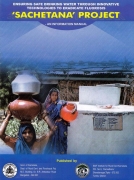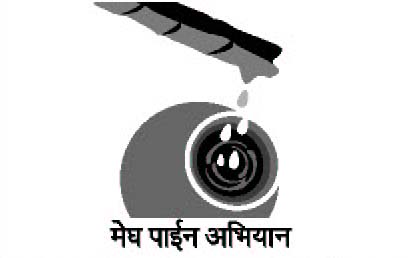Drinking and other Domestic Uses
Jobs via Devnetjobs - dated 19 May, 2010
Posted on 18 May, 2010 02:47 PMContent Courtesy:DevNetJobsIndia
- Programme Manager - Drinking Water
Lanco Foundation
Location: Gurgaon - Haryana
Last Date: May 24, 2010
Ensuring safe drinking water through innovative technologies to eradicate fluorosis - Sachetana Project - Information manual by BIRDK and Govt of Karnataka
Posted on 05 May, 2010 05:31 PM This manual produced by BIRD-K and DRDPR (GoK) provides the details of the Sachetana project that aims to provide safe drinking water to fluorosis affected populations through the adoption of innovative technologies for rainwater harvesting and groundwater recharge.
This manual produced by BIRD-K and DRDPR (GoK) provides the details of the Sachetana project that aims to provide safe drinking water to fluorosis affected populations through the adoption of innovative technologies for rainwater harvesting and groundwater recharge.
The project is being implemented through the Gram Panchayats of 60 villages from 4 taluks among three districts of Karnataka state over a period of five years (2006-11).
The objectives of the project include:
- Provision of safe drinking water through innovative rain harvesting structures
- Recharge of groundwater through excavation of percolation ponds
- Recharge of existing bore wells and direct recharge of aquifers
- Awareness generation activities to promote sustainable management and management of water resources and water harvesting structures.
Pipeline distribution of water : A concept
Posted on 17 Apr, 2010 12:20 AMThe word Water is is sufficient to fulfill the thirst as well as enough power to be drowned away the entire universe.
India could lead the world by supporting a new global drinking water project
Posted on 31 Mar, 2010 03:55 PMWe are very serious about providing a New Global Clean Drinking Water SVD project. http://www.chakraworld.net/H2OTrust.swf
Reverse osmosis plants for rural water treatment in Gujarat - A research paper by CAREWATER
Posted on 23 Mar, 2010 01:38 AMThis research paper attempts to understand and map the Reverse Osmosis (RO) phenomenon, a technology that is turning out to be an important solution for drinking water treatment in rural Gujarat. Treatment plants with capacity ranging from 10 litres per hour (lph) to 6000 lph are now supplying drinking water in several hundred villages of the state. Small sized plants with capacity < 20 lph are used by individual families whereas medium to large sized plants (>100 lph) are being used for public consumption.
Organising safe drinking water through community participation in flood-affected areas of Bihar - Case studies from the work of the Megh Pyne Abhiyan network
Posted on 22 Mar, 2010 02:08 AM This set of case studies (in hindi), details the work of Megh Pyne Abhiyan and their network partners - Gramyasheel and Samta, in organising safe drinking water in participation with the local village communities, in the flood affected West Champaran, Supaul and Khagaria districts of Bihar.
This set of case studies (in hindi), details the work of Megh Pyne Abhiyan and their network partners - Gramyasheel and Samta, in organising safe drinking water in participation with the local village communities, in the flood affected West Champaran, Supaul and Khagaria districts of Bihar.
Assessment of water and sanitation facilities of Madanpur Khadar in New Delhi - A research study
Posted on 20 Mar, 2010 05:30 AMThis research study done as part of the author's dissertation work is an attempt to assess the water and sanitation situation of a resettlement colony, Madanpur Khadar, on the outskirts of New Delhi. The lack of safe drinking water and sanitation facilities is a major problem affecting most communities, particularly rural and urban slum and resettlement colonies like Madanpur Khadar.
Achieving drinking water security through participatory IWRM approaches in Dhasan sub-basin - A case study by WaterAid and Haritika
Posted on 20 Mar, 2010 04:05 AMThis presentation describes the work of WaterAid and Haritika in organising drinking water security through Integrated Water Resource Management (IWRM) approaches, in Dhasan river sub-basin (part of Bharar river basin), Nowgon block, Chattarpur district of Madhya Pradesh.
National Seminar on Sustainability of Drinking water supply system with special reference to Multi Village schemes (SDWMS 10), DSCE, Bangalore
Posted on 15 Mar, 2010 03:00 PMInvitation to participate in the National Seminar on Sustainability of Drinking water supply system with special reference to Multi Village schemes to be held at DSCE, Bangalore from March 22-23, 2010
The Vand women of Kachchh - A case study on drinking water management from the work of Samerth Trust in Kutch, Gujarat
Posted on 07 Mar, 2010 02:23 AMThis case study is about Samerth's efforts to achieve drinking water security, in participation with local village communities in Rapar, Kachchh (Gujarat). Arghyam has been collaborating with Samerth on this effort since 2007.
The Vand Women of Kachchh: Guest post by Keya Acharya
She gazes unflinchingly with direct eyes into the camera with a feminine mystique and physique that could, be gracing the front cover of a beauty magazine. Her red, mirror-worked blouse, in the traditional Kachchhi style worn by tribal women, is strapped at the back in stringed bows, greatly practical in the dry, wilting heat of that arid expanse of land in hinterland Gujarat called Kachchh. Her skirt is a colourful hue of printed green, and her ‘dupatta’ is a blazing red piece of cloth swept forward from her waist, partially covering her back, brought over her head and tucked back demurely into her waist again. Her name is Ammi.





